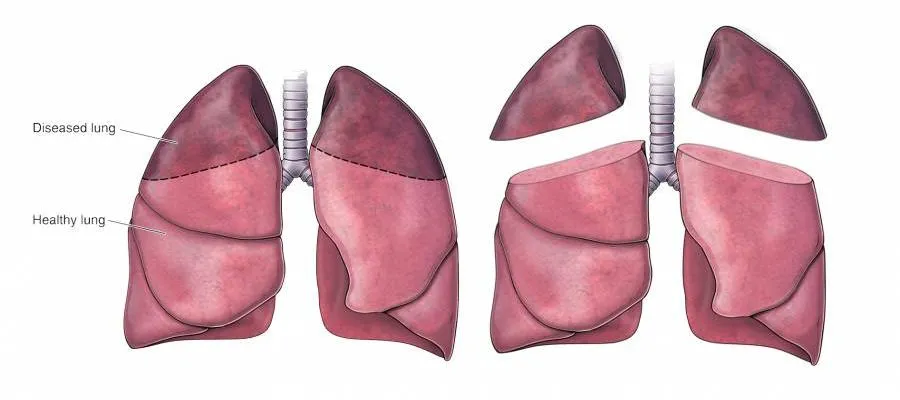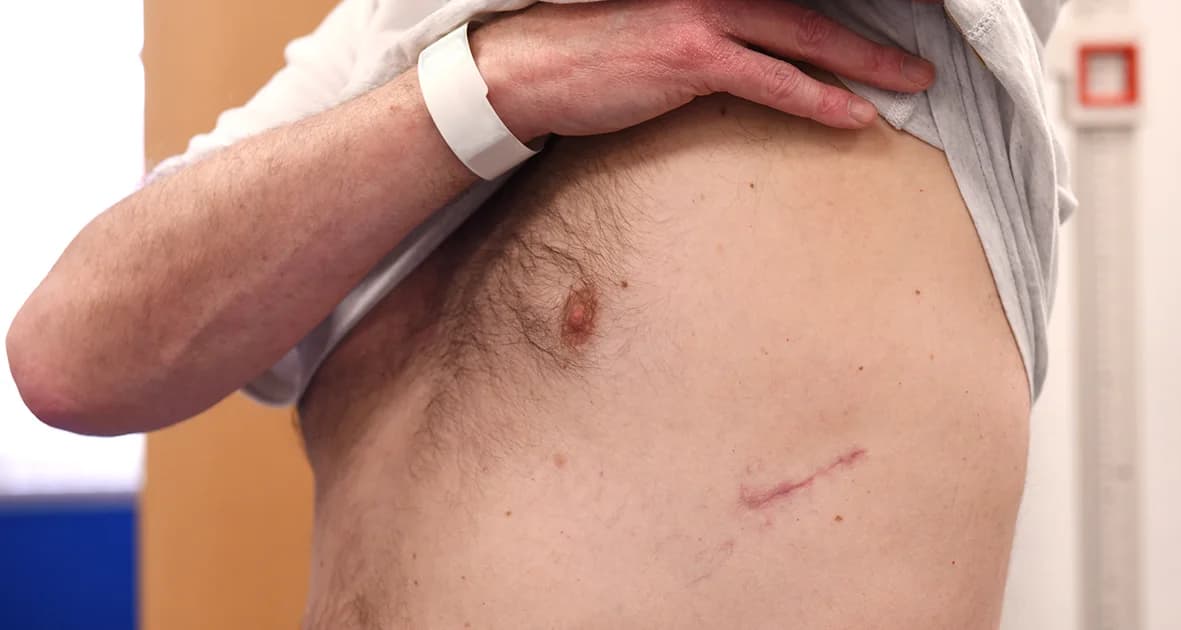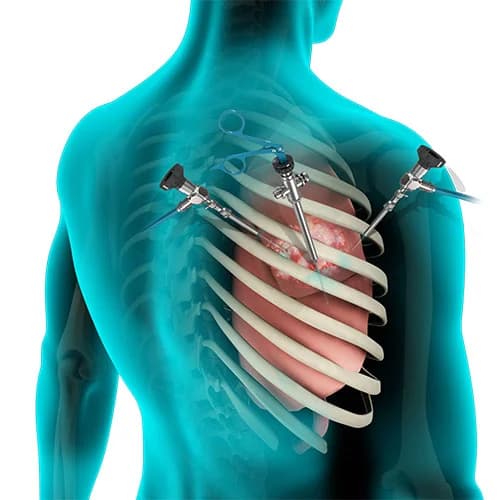Lung surgery is the removal of lung tissue to repair the damage, perform a biopsy, impede cancerous growth, or remove extraneous material such as fluid build-up or blood in the lungs. Lung surgery is sometimes performed to stem side effects of other procedures, such as when blood may need to be removed from the organ during a different surgical procedure.
Reasons for lung surgery?
Performing a biopsy of lung tissue in case, any abnormal growth is suspected.
Draining fluid build-up from the chest in a lung surgery procedure called pleurodesis.
Removing a part of the lung if it has been infected by cancer.
Draining blood from the chest cavity after trauma such as an accident.
Replacing a lung in case, no other lung surgery procedure can give results.
Removing "pulmonary blebs" and preventing the collapse of the lung.

Types of lung surgery
Thoracotomy
Your lung surgeon will make an incision in the chest wall to access the lung tissue that needs repair or removal. This traditional method is invasive where the rib cage is separated or a rib is removed. This procedure takes 2-6 hours. Depending on the patient’s overall health, recovery time after lung surgery varies. After open lung surgery, it is normal to spend about a week at the hospital under continued medical observation. It is also quite common to feel tired for 6-8 weeks after the lung surgery procedure is completed.
Video-assisted Thoracoscopy Surgery (VATS)
This less-invasive operation helps with a quick recovery. During this surgery, your surgeon will make a small incision in the chest wall through which several tubes are passed. This lung surgery procedure is also known as keyhole surgery, due to the size of the incision made, as well as laparoscopic lung surgery, named after the camera device. Due to smaller wounds, this procedure has a drastically shorter recovery.

These two processes can be used to remove all or some portions of a lung and can be classified as below:
Pneumonectomy
Removal of an entire lung that is irreversibly damaged either due to cancer or through scarring is known as a pneumonectomy. Removing an entire lung through a lung surgery procedure requires thoracotomy, and is used as an extreme measure after the possibility of all other lung operations have been excluded. It is possible to live a normal life after pneumonectomy with adequate rehabilitation.
Lobectomy
Your lung consists of 5 sections, your left lung has 3 sections, and your right lung has 2 lobes. A lobectomy lung surgery procedure involves a lung surgeon sectioning off and removing one of the lobes of the lungs to ensure that no airways are blocked, or so that cancer does not spread to other parts of the lung and the body.
Wedge resectioning
During this lung surgery, a portion of the lung is removed when a lobectomy is ruled out. Usually used to remove tumors, the wedge resection procedure involves sectioning off a portion of a lung lobe that carries that cancerous growth, instead of the entire lobe. You should keep in mind that the chance of cancer returning is higher than with a lobectomy.
Segmentomy
This type of lung surgery involves the removal of certain portions of the lung with the blood vessels such as veins and arteries passing through them, without removing a complete lobe or wedge.
Sleeve resectioning
If the cancer is growing on or near the bronchial tubes, the lung surgeon will section off the affected part and reconnect the tube through this lung surgery procedure.
Lymphadenectomy
A lung surgeon may remove lymph nodes from the lung area if they suspect the possibility of cancer in them. This lung surgery procedure reduces the possibility of recurring cancer and is most often followed by radiation therapy.

Risks & Complications of Lung Surgery
The most common complication from lung surgery involves pain which can be managed by medication. Other complications of lung surgery include:
Air leaks: In case an airway is inadvertently damaged during lung surgery, an air leak that is not completely closed, becomes a serious complication.
Damage to surrounding areas: An incision on a blood vessel, such as a major artery or vein, or to an undamaged part of the lung can happen.
Infections: These are more common risks and with some varieties of superbugs becoming immune to medications, sterilization during the lung surgery procedure has to be completely ensured.
Allergic reaction to anesthesia: Since a lung operation is performed under the influence of general anesthesia, it is necessary to ascertain the patient will not face complications during surgery.
Conclusion
In conclusion, lung surgery is a critical intervention for treating various lung conditions, particularly lung cancer. There are several types of lung surgeries, each tailored to the patient’s specific needs and the nature of their condition. These include wedge resection, which removes a small section of the lung; segmentectomy, which removes a larger portion of the lung; and lobectomy, which involves the removal of an entire lobe of the lung. In more severe cases, a pneumonectomy may be performed to remove an entire lung. Minimally invasive options, such as thoracoscopic surgery and robotic surgery, are also available, offering patients shorter recovery times and less post-operative discomfort. The choice of procedure is determined by several factors, including the size and location of the cancer, the patient’s overall health, and the type of lung cancer.
Read more: